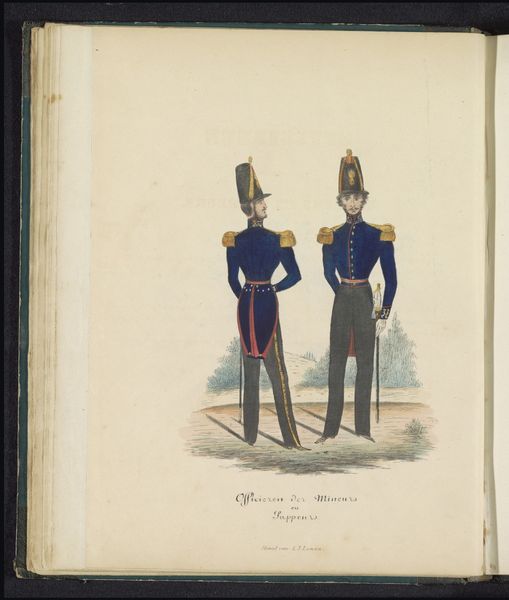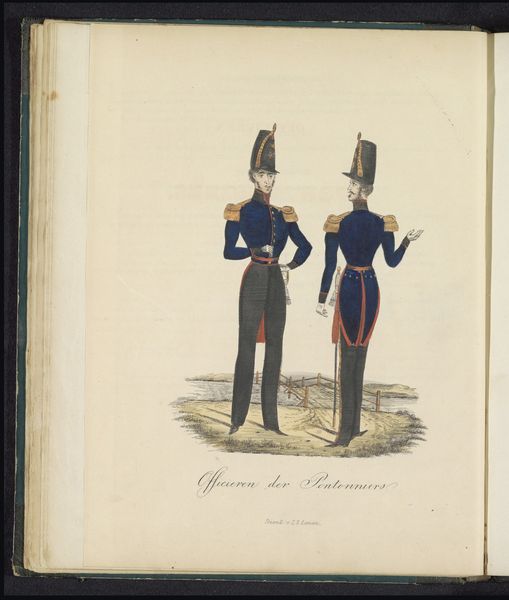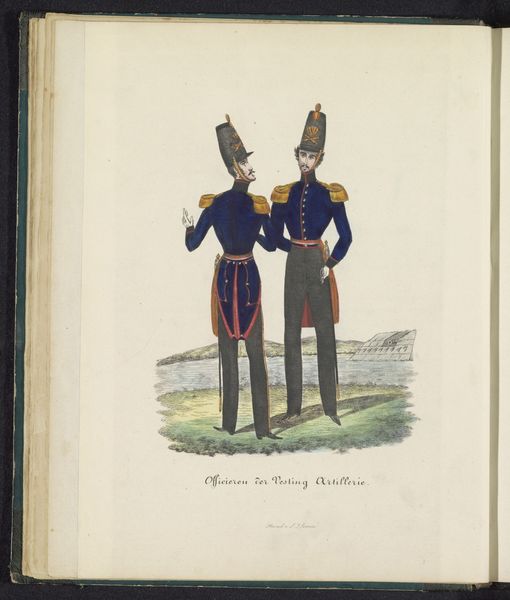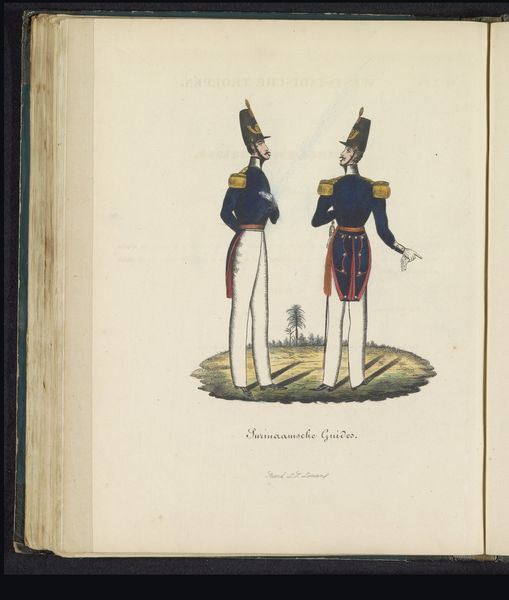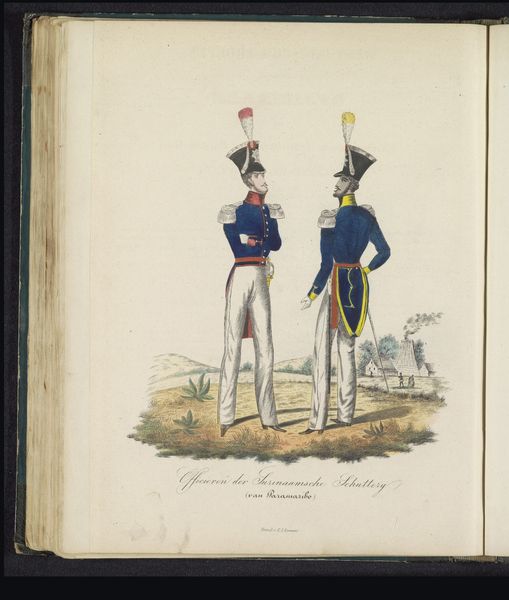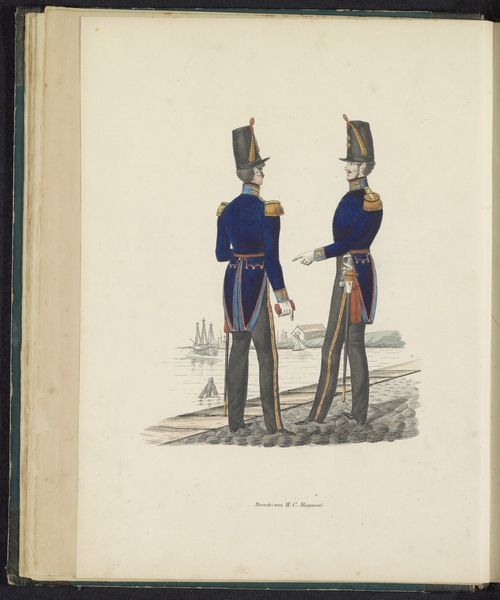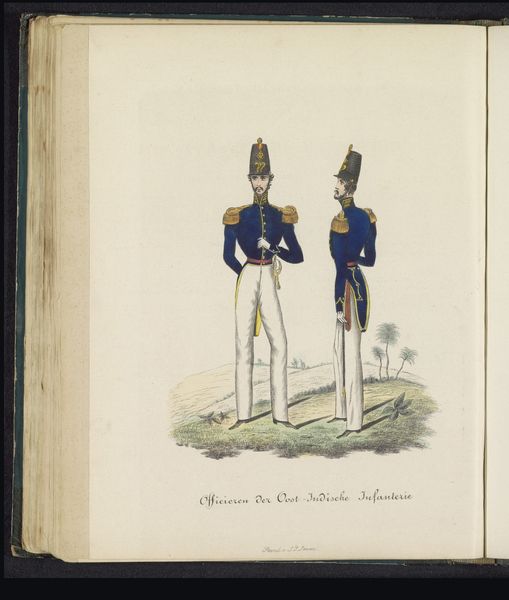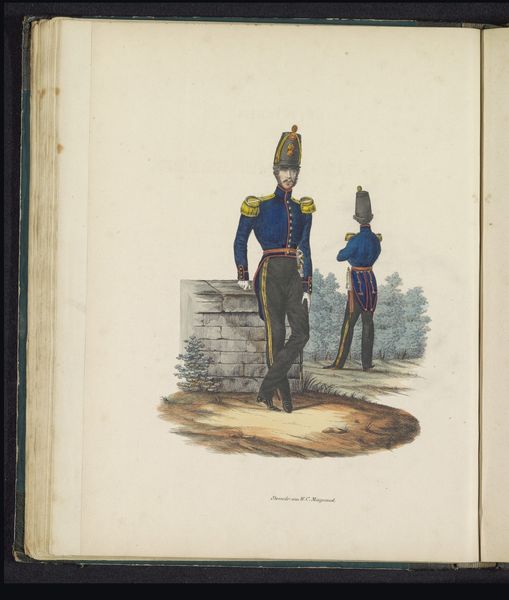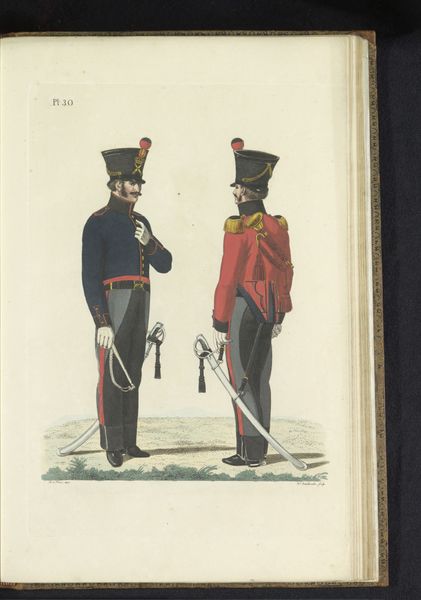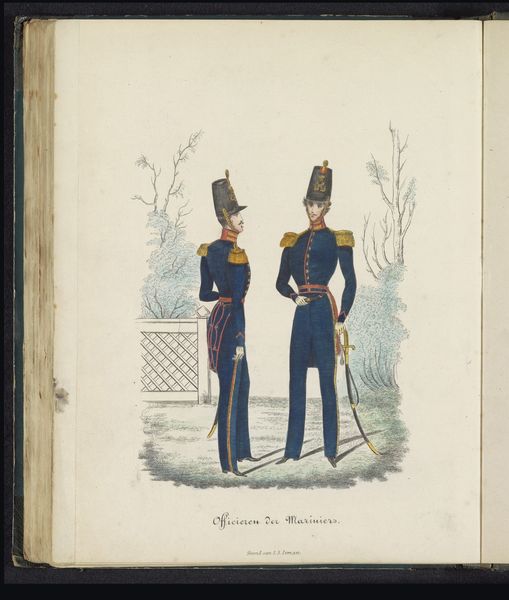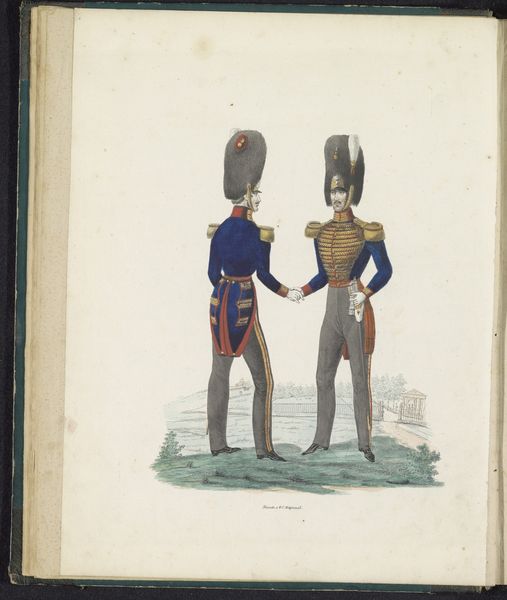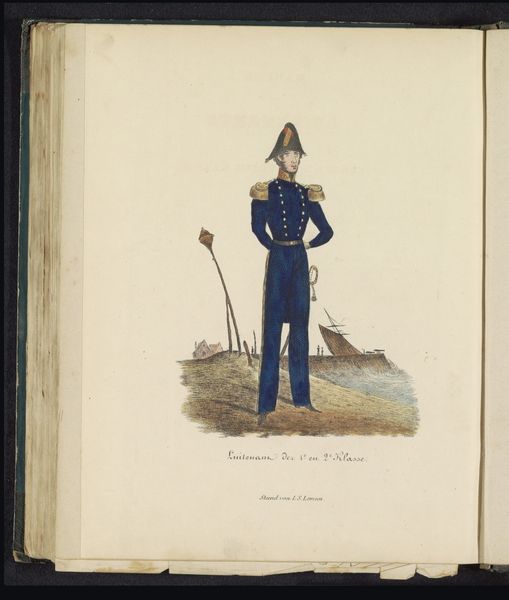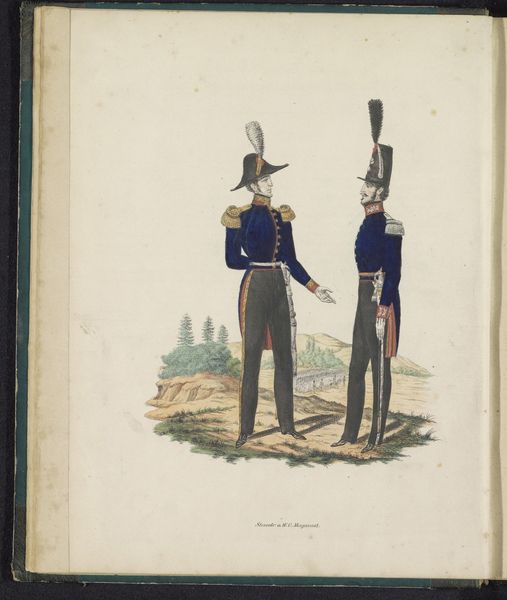
Uniform van de officieren van de Curaçaose Schutterij van de West-Indische troepen, 1845 1845
0:00
0:00
drawing, coloured-pencil, paper
#
portrait
#
drawing
#
coloured-pencil
#
paper
#
coloured pencil
#
watercolour illustration
Dimensions: height 270 mm, width 200 mm
Copyright: Rijks Museum: Open Domain
Editor: This is a drawing from 1845 by Louis Salomon Leman, titled "Uniform van de officieren van de Curaçaose Schutterij van de West-Indische troepen," made with colored pencil on paper. I am struck by the artist’s precision and delicacy with what could have been a rather rigid and unremarkable subject. What draws your eye to this work? Curator: Well, immediately, I'm thinking about the labor embedded in the making of such a precise record. Consider the artist meticulously rendering each button, epaulette, and fold. What does this detailed documentation tell us about the value placed on these uniforms and the individuals who wore them? Think about the process itself, the time and materials used, particularly in relation to colonial economies and power structures. Editor: That's an interesting angle. It almost elevates the uniform itself, making it a symbol of authority through its careful depiction. The social context must have played a large role in this piece. Curator: Precisely! And look at the materials: colored pencils, paper. How were these acquired? Were they locally sourced or imported, further reinforcing the connection between Curaçao and broader networks of trade and control? It pushes us to think beyond the simple image to the mechanisms behind its production and distribution, right? Editor: Right. Now, examining the paper and pigment connects the art to broader social and economic systems. What were they consuming? Curator: Exactly! What kind of labor conditions went into producing those colored pencils, that paper? And who was commissioning and consuming these images, and to what purpose? I suppose examining this image closely, we gain insight into 19th-century colonial society and material culture that might be overlooked otherwise. Editor: I never thought about it that way, focusing on the materiality rather than the figures represented. It’s shifted my understanding completely. Thanks! Curator: My pleasure. It's all about recognizing the significance in what is manufactured, both in front of us and behind the scenes.
Comments
No comments
Be the first to comment and join the conversation on the ultimate creative platform.

